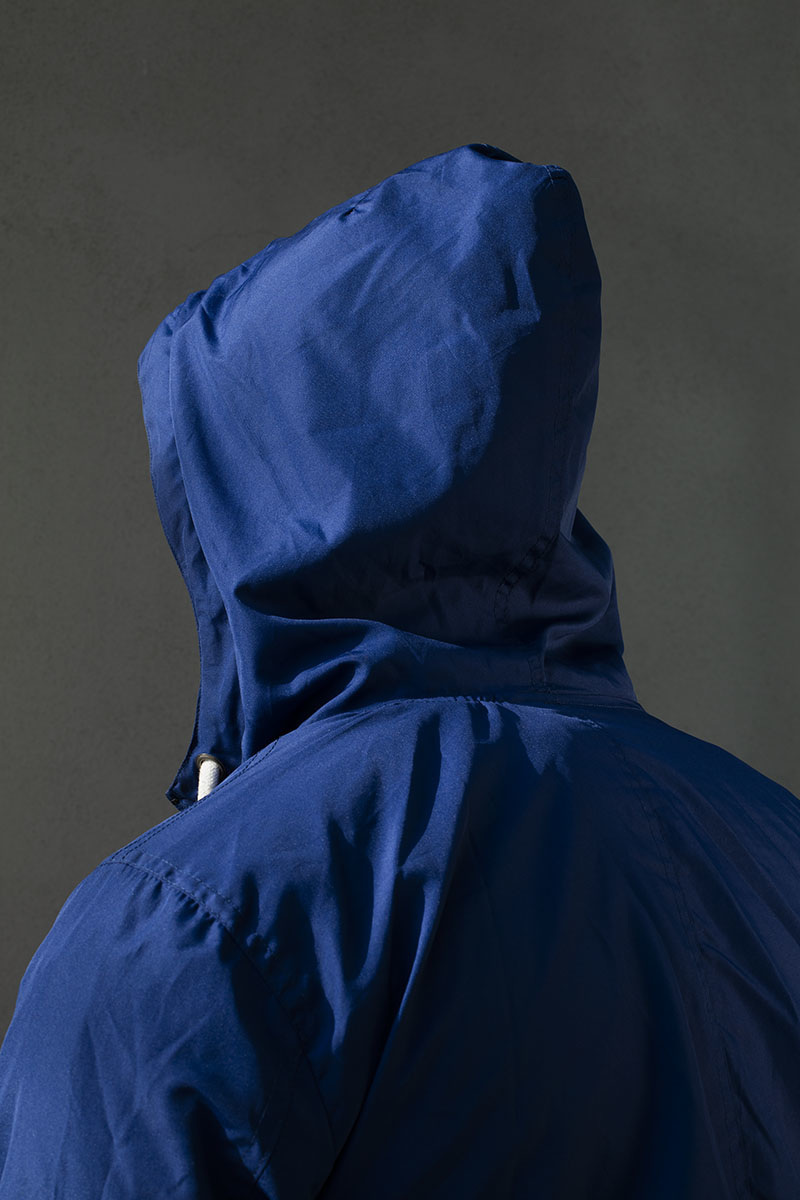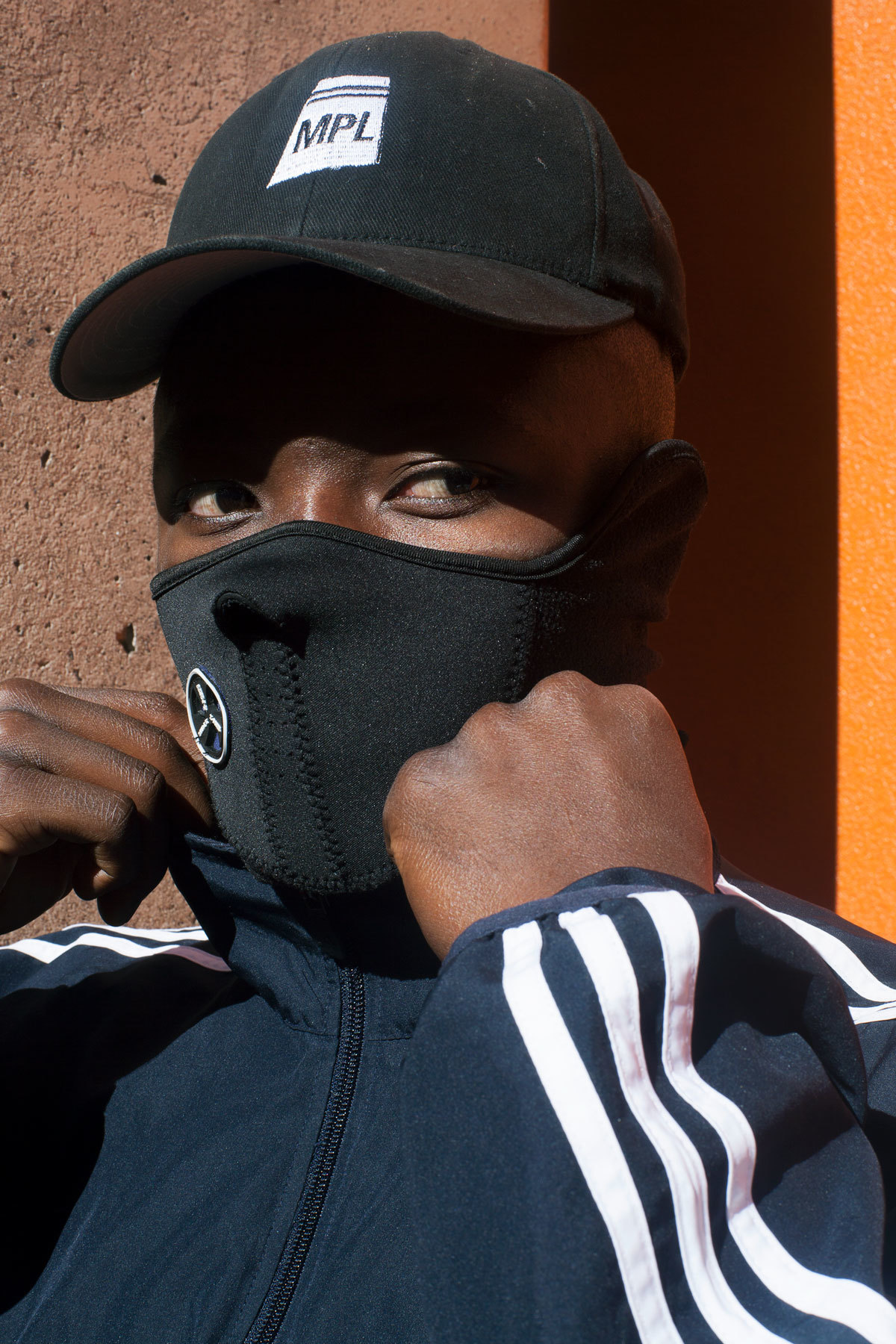The late African American photographer James Van Der Zee once said: “the main thing is to get the camera to see it the way you see it.” While this sentiment certainly resonates with image-makers, it seems particularly evocative when looking at the representation of the often absent or distorted subject.
At 27 and freshly graduated from Yale’s MFA programme, John Edmonds follows in the footsteps of fellow photographers challenging the construction of the black body – often with a queer sensitivity – like Lyle Ashton Harris, Zanele Muholi or Deana Lawson. His poetic, delicate portrayal of the black male subject is aesthetically thought-provoking and politically necessary.
“I think there is something very powerful in undoing black masculinity,” says a composed Edmonds as we meet on the terrace of Miami’s Deauville Hotel. “It’s a construct, it’s a performance. Masculinity itself is a performance.” Pictures from his series Hoods are on display at NADA Art Fair, showing ghostly hooded figures from behind with a cinematographic quality. The anonymous nature of the imagery, in dialogue with the distinct streetwear, prompts the viewer’s speculations and projections as to the protagonist’s identity. The hood becomes a monolithic signifier, he argues. “I’m always thinking, how little or how much information do I want to give?” he says. “What are the desires or fantasies that I can conjure up in the human imagination, by showing very little or very much?”

Growing up in Washington DC, Edmonds was raised in a Baptist family and exposed from a young age to religious art and representations of biblical scenes. “The iconography and symbolism of religious painting—the subtlety of moments of pain, ecstasy and ascension—always stuck with me,” explains the NY-based artist, “when you look at my work, there is a very deity-like representation of the black body.” This is reflected in earlier works like the 2012 picture Marcus and the Sacred of Heart, where a teenage boy with a Superman tattoo on his chest appears like an angelical presence in an eerie blue room, gazing straight into the camera. “I’d met him on the bus, I didn’t know he had a tattoo!” laughs Edmonds, “but when I see that picture, for me, it looks just like the sacred heart.”
Like Deana Lawson, Edmonds primarily photographs strangers, who he meets on the street or in public spaces. His subjects are untraditionally striking, and bear similar traits. “What I’m really attracted to, other than looks, is the kind of confidence and agency that these men carry themselves with” the photographer tells us, flicking through images on his phone, “the pictures illustrate a particular type of guy, like an archetype of a lover, an icon of desire…”
“I have so much freedom in my identity, being a black queer artist” Edmonds explains, when discussing the history of queer art. “I think of my work as this kind of archive as well as an excavation of queer black history.” Earlier this year, he produced Man in Polyester Suit, a fragmented montage of two negatives assembled in a sixteen panels showing a suited man who unzips his trousers. Clearly referencing Robert Mappelthorpe’s photograph of the same name, the work poses a commentary on the fragmentation of the subject’s identity, but also questions what constitutes the element of desire in the image. “Mappelthorpe’s pictures have this intense kind of glamourising, that’s almost dehumanising in a way,” Edmonds says. “You see the penis, but it’s not erotic at all. I wanted that moment of reveal to be part of the desire of looking at the picture.”

Besides an upcoming solo show at Ltd Los Angeles in the Spring, Edmonds is currently part of the group exhibition tête-à-tête, curated by artist and friend Mickalene Thomas at David Castillo Gallery in Miami. The exhibit is the sixth iteration of an ongoing series and brings together 14 image-makers from different generations and backgrounds, examining social and personal mythologies of the black body. “It is a conversation that needs to happen, over and over again,” Edmonds tells us, “the reality is that black people, and queer people, are under a certain type of physical, emotional and psychological assault every day. One thing that my work communicates is that mental space that one may go for refuge, or solace.”
In a time when racial prejudice is increasingly legitimised by the rise of populist movements internationally, Edmonds’ sophisticated enquiry into the established perceptions of the self and others, his playful ways of navigating between the visible and the invisible, raise essential questions. “What is absent and often overlooked is the beauty in the times of repression, that we are still living and loving through it all,” he explains, “that’s my job as an artist, to show that beauty, with the complexity and all the layers that come with it.” Van der Zee, surely, wouldn’t disagree.
The group exhibition Tête-à-tête runs until January 31, 2017 at David Castillo Gallery, Miami

Credits
Text Benoît Loiseau
